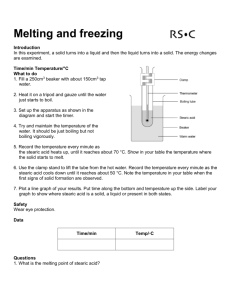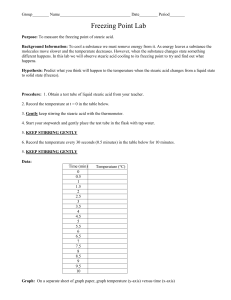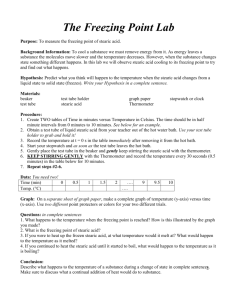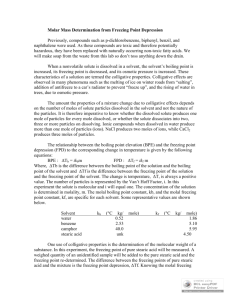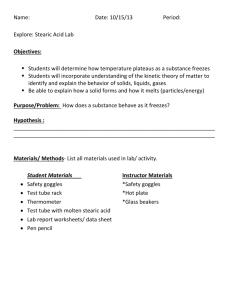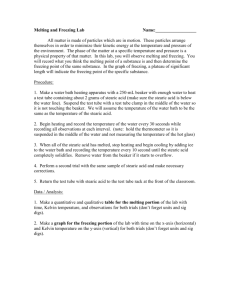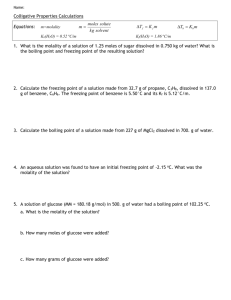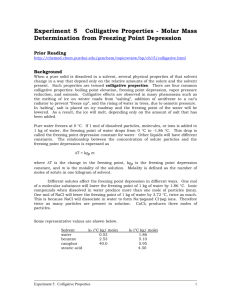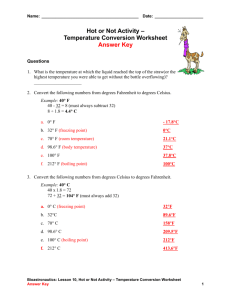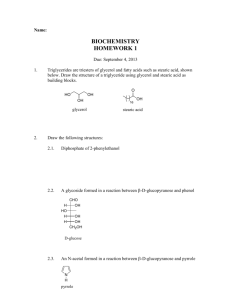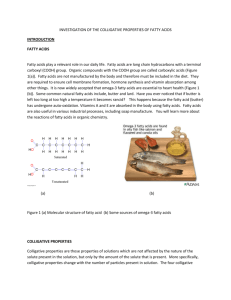Experiment no.3
advertisement
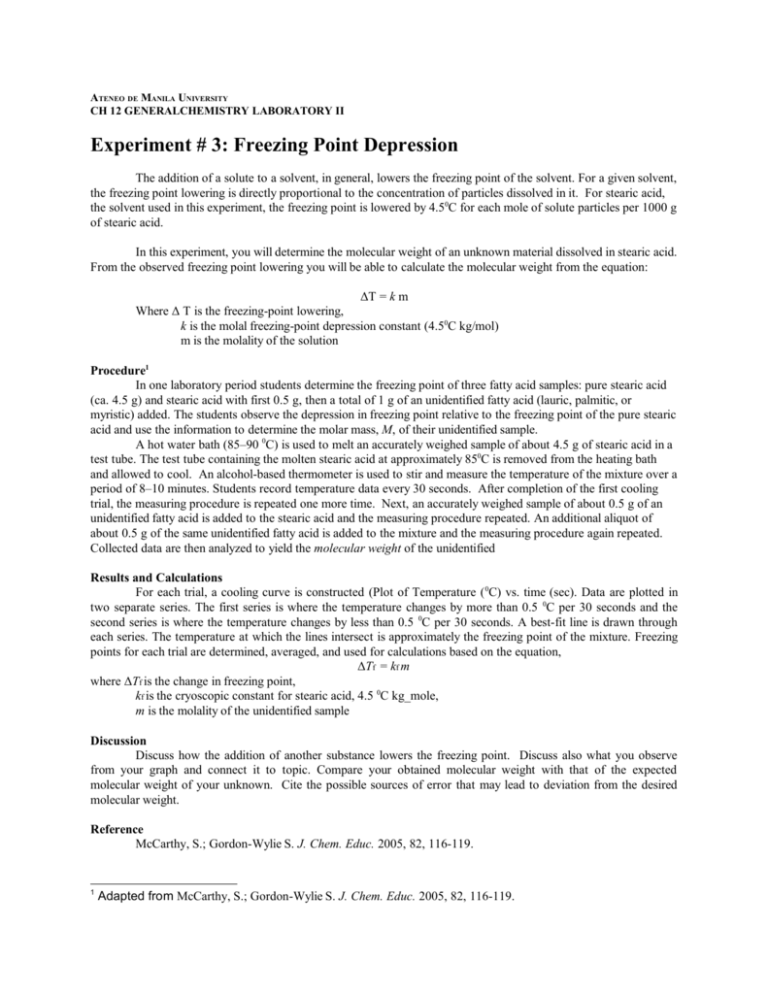
ATENEO DE MANILA UNIVERSITY CH 12 GENERALCHEMISTRY LABORATORY II Experiment # 3: Freezing Point Depression The addition of a solute to a solvent, in general, lowers the freezing point of the solvent. For a given solvent, the freezing point lowering is directly proportional to the concentration of particles dissolved in it. For stearic acid, the solvent used in this experiment, the freezing point is lowered by 4.50C for each mole of solute particles per 1000 g of stearic acid. In this experiment, you will determine the molecular weight of an unknown material dissolved in stearic acid. From the observed freezing point lowering you will be able to calculate the molecular weight from the equation: ΔT = k m Where Δ T is the freezing-point lowering, k is the molal freezing-point depression constant (4.50C kg/mol) m is the molality of the solution Procedure1 In one laboratory period students determine the freezing point of three fatty acid samples: pure stearic acid (ca. 4.5 g) and stearic acid with first 0.5 g, then a total of 1 g of an unidentified fatty acid (lauric, palmitic, or myristic) added. The students observe the depression in freezing point relative to the freezing point of the pure stearic acid and use the information to determine the molar mass, M, of their unidentified sample. A hot water bath (85–90 0C) is used to melt an accurately weighed sample of about 4.5 g of stearic acid in a test tube. The test tube containing the molten stearic acid at approximately 850C is removed from the heating bath and allowed to cool. An alcohol-based thermometer is used to stir and measure the temperature of the mixture over a period of 8–10 minutes. Students record temperature data every 30 seconds. After completion of the first cooling trial, the measuring procedure is repeated one more time. Next, an accurately weighed sample of about 0.5 g of an unidentified fatty acid is added to the stearic acid and the measuring procedure repeated. An additional aliquot of about 0.5 g of the same unidentified fatty acid is added to the mixture and the measuring procedure again repeated. Collected data are then analyzed to yield the molecular weight of the unidentified Results and Calculations For each trial, a cooling curve is constructed (Plot of Temperature ( 0C) vs. time (sec). Data are plotted in two separate series. The first series is where the temperature changes by more than 0.5 0C per 30 seconds and the second series is where the temperature changes by less than 0.5 0C per 30 seconds. A best-fit line is drawn through each series. The temperature at which the lines intersect is approximately the freezing point of the mixture. Freezing points for each trial are determined, averaged, and used for calculations based on the equation, ΔTf = kf m where ΔTf is the change in freezing point, kf is the cryoscopic constant for stearic acid, 4.5 0C kg_mole, m is the molality of the unidentified sample Discussion Discuss how the addition of another substance lowers the freezing point. Discuss also what you observe from your graph and connect it to topic. Compare your obtained molecular weight with that of the expected molecular weight of your unknown. Cite the possible sources of error that may lead to deviation from the desired molecular weight. Reference McCarthy, S.; Gordon-Wylie S. J. Chem. Educ. 2005, 82, 116-119. 1 Adapted from McCarthy, S.; Gordon-Wylie S. J. Chem. Educ. 2005, 82, 116-119.
